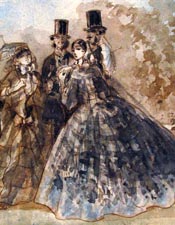The Painter of Modern Life (Le Peintre de la Vie Moderne)
, translated by Kline, A. S. (contact-email)
Baudelaire’s ‘manifesto’ of Modernity was written in 1860 and published in instalments in Le Figaro in 1863. The essay serves as Baudelaire’s manifesto on Modernity, a term first used in French by Chateaubriand. Using Constantin Guys (Monsieur G.) as a case study, Baudelaire explores the facets of Modernity, including technological and economic transformation, individual alienation, and the challenges to traditional norms. His work influenced subsequent artistic movements like Impressionism, Post-Impressionism, and Surrealism. Moreover, he paved the way for Symbolist and Surrealist poets. Baudelaire’s conceptualisation of Modernity endures, capturing the ongoing tensions in urban, secular, and commercial society.

Kline, A. S.
Support Open-Access:
Your contribution keeps our classical translations available to all. Every dollar helps support classics education and funds the expansion of our catalogue. Value what we do? Donate now.
File Downloads:
© Copyright, All Rights Reserved. This work may be freely reproduced, stored and transmitted, electronically or otherwise, for any non-commercial purpose. Conditions and Exceptions apply.